Archive for the ‘Tamil History/Culture’ Category
Vasuki: The Story of a Young Eelam Tamil GirlBy Admin - May 8th, 2014 |
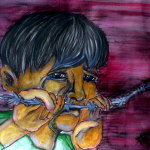 |
|
May we remember. The month of May creates a sense of calmness, the calmness that follows terror and torture. Here, we present to you, a collection of life incidents, compiled by Anbu from eyewitness accounts. They represent thousands of other stories that have been left untold. Please be advised that these stories contain materials that may be unsuitable for some readers. You may continue to read at your own discretion. The real names of the author and characters in these short stories are not available to public at the moment. Thazhumbkam is obliged to protect the identities of the people involved in these stories and their relatives whom may be in danger should their identities be revealed. Thazhumbakam is a Tamil Genocide Memorial Museum initiated by the Human Rights Advocacy Council of Canadian Tamil Youth Alliance. Painting by Keera Ratnam Vasuki: The Story of a Young Eelam Tamil Girl There was barely any food left. Starvation, exhaustion and the barrage of artilleries continued on as we feared for our lives. One morning, my mother and my aunt came out of the bunker to help my aged grandmother with her morning routines. Myself (age 13), my sister (age 10) and my brother (age 6) and my cousins aged 4 and 1 and my father stayed inside the bunker. My uncle had died in an air attack on Vaddakachchi last year. So, my aunt left her young children with us and went along with my mother outside the bunker to help my grandmother. As they were outside, a shell fell close to our place and my father peeked out of the bunker and called my mother. My mother and aunt were trying to help grandmother who was unable to run back to the bunker. Just then, another shell blasted closer to our bunker. The continuous barrage of shells continued for a few minutes. We ran outside after the blasts died down. We saw flesh strewn around the bunker. I kept my hands on my mother’s chest. It was a huge hole. My aunt’s head was chopped off. Blood was oozing from my grandmother’s ears. Many others were dead. Shelling continued. We hugged our mother’s body tight and we wept. Father and all of us wept in the bunker. My little cousins could not figure out what had happened to their mother and they cried in fear as well. All five of us were now alone with our father. We stepped out of the bunker after four hours and buried them in a place near the bunker. |
Thangachi’s Corner: Dance CultureBy Admin - March 26th, 2014 |
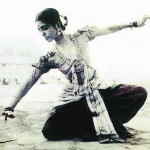 |
|
Updated every other Wednesday, “Thangachi’s Corner” is a bi-monthly feature that discusses relatable topics and issues relevant to the Canadian Tamil youth of today. For more information about this feature or to suggest a topic, feel free to e-mail us at blogs@ctya.org! Written By: Keerthana Raveendran When most people talk about their love of dance, they make it sound as if it were love at first sight. As if it were an instinct that sprung to life at first step—almost as if the art form was a part of their very being. But when I first started learning dance at the age of four, I absolutely hated it. Back then, in the nineties, every Tamil girl had to learn how to dance. It was just the thing, though I couldn’t for the life of me understand the beauty of the form. After all, it was hard to feel graceful when it felt like my muscles were being torn apart slowly. And as a kid enrolled in Bharathanatyam classes with about twenty other girls, standing in a row and stomping my feet to the beat of an angry lady hitting a wooden stick on a plank didn’t seem like much fun. And I wasn’t the only one either. In fact, I distinctly remember being in a particular group of friends at dance class at around the age of nine, and the one thread that brought us all together was that fact that we just couldn’t wait to quit. Really, no joke. When one of us did finally manage to quit, when one of us didn’t show up to class for the next few weeks, the rest of us would experience an unpleasant mixture of jealousy and reluctant fascination. In any case, I was never one of those lucky few—no, my dance history went on for years (mostly because much choice wasn’t allotted where that was concerned), and I grew up slowly coming to terms with the fact that I was in it for the long run. It wasn’t until much later that I became invested in dance culture. Was it the performance aspect, do you wonder? Did I perhaps enjoy adorning that gorgeously crafted traditional attire and showcasing my hard-earned skills before a crowd? Nope—performance was my nightmare. But if you asked a dancer what about the art form they loved, they would all give you a different answer. And for me, it was the history that never failed to fascinate. Sure, I enjoyed the crisp visual aesthetics, and I came to appreciate the harsh movements which became a stress reliever long before I realized I needed one. I even loved the aspect of choreography, and would find myself drift off to random music during long bus rides before catching myself choreographing steps to the tune in my mind. But I suppose I liked most the idea of being linked to people well before my time. I liked learning about the evolution of dance over the years, and feeling a sort of connection to these ancestors I will never get a chance to meet. I don’t think I expected for dance to become such an integral part of my life. I’m not sure if anyone does at that age—it’s just something that sneaks up on you. But in light of the successful execution of CTYA’s recent Thaalam 2014, it’s hard to ignore the element of dance when defining our Tamil culture. After all, culture isn’t simply limited to language or festivities—the arts too play a key role in shaping our identity as a society. As renowned Bharathanatyam icon Smt. Rukmini Devi once said, “Dance is a very difficult art to muster, not merely because it has so much to do with physical movements but because the responsibility of the artist is far greater in this art than in any other.” Perhaps that’s also what makes the form worthwhile. A history in dance is not something that just goes away, even years after your last class. It’s in your brain every time you listen to a particularly captivating beat. It’s in that terrible foot-tapping habit you’ve got—the one your mother hates and is always telling you to quit. It’s in your weird tendency to break into a step at the oddest situations. But dance is a reflex now, completely unconscious, done in instinct and born from a restlessness that has now become second nature. Even if you did hate it when you started. About the Author: Keerthana Raveendran, known by her flock as Thangachi, is an aspiring author whose motivation to write usually kicks in when she’s supposed to be occupied elsewhere. She is an avid procrastinator who sees potential novel ideas as movies in her head. Maybe one of these days they’ll make it onto the page. Thangachi is currently a Masters student studying English at York University. |
Manvaasanai: The BeginningBy Admin - February 8th, 2014 |
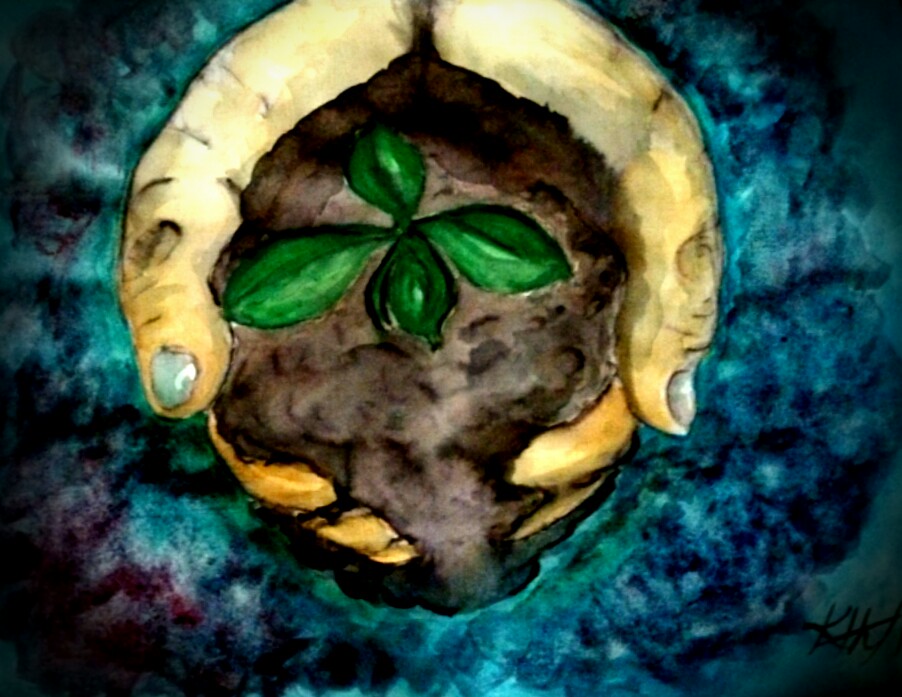 |
|
Written By: Keera Ratnam Manvaasanai is a new feature by Keera Ratnam that tells stories of back home. Keera is an avid artist and writer. Keera Ratnam was the recipient of the Top Talents 2013 Visual Arts Award. March 26 2012 Mother nature was not doing me a favor, the weather was sticky and humid. The change from 14 degrees to 38 degrees was too drastic for me to handle. I felt sweat drip down my temple making a trail that lead to the bottom of my ear. My eyes red, face swollen and limbs aching, all from the uncomfortable 10 hour transit at New Delhi Airport and lack of sleep since the day of my departure from Canada. I stood with all my backpack holding on to my father’s hand luggage. He was in deep sleep and didn’t even realize that we reached our final destination. I tapped him, “Appa…Appa…we’re here,” I said. He opened his eyes and looked at me. His eyes were red and his face was also swollen. He held on to my arm and tried standing up. His back was hurting and couldn’t stand properly. “Ennum konja thooram than ..Appa…elumpungo”. I told him we only had to walk a bit more. He smiled and took his luggage from me. My father was a darker gentleman. He was in his mid 60’s. He had difficulty walking on his own due to his spinal injury. There was a long line up, the only way in which we were told to assemble to depart the plane. As my father and I reached the exit, a air hostess from Jet airways wished us a good trip and helped my father down the stairs. As I came down the stairs I looked around and saw nothing but trees and cement. The air was extremely humid, but had no scent and no breeze. I felt like I was an egg frying in pan and at that moment only one thing came to mind was I just wanted to shower my self with ice cold water, this was the only way to freshen myself up. As we waited by the plane a streetcar pulled up to retrieve passengers, we got on. The streetcar lead us into the Sri-Lankan airport. It was definitely not what I had expected. It was small, but very clean. As my father and waited in line to show our visas and passports, my father asked me if I remembered this airport. I was young then my father said. He said, “I visited this airport twice, once when I was 18 months old and when I was 3 1/2 years old, when I migrated to Canada”. He remembers the day that he left my mother and I behind to migrate to Canada, and how we waved to him farewell in this very airport. Things changed over time he said. Yes, he is right, things did change but I was just too young to remember. As I glanced around I felt like as if I was at a shopping mall in Canada, but with very low air-conditioning. After clearing thing at the customs office, I headed down the escalator to retrieve my luggage. Stacking all of our luggage on one trolley, I told my father to follow me. As we walked to wards the exit an officer stopped my father asking to see his Sri-Lankan passport. I walked towards the officer giving him my fathers passport and told him that we don’t have Sri-Lankan passports. ” Oh you only have Canadian passports?” he asked. I nodded my head. ” You are only Canadian citizens?” he asked. “Yes”, I replied. He nodded and wished us the best of luck on our trip. As we walked across to passenger pick up I noticed that, those who had Sri-Lankan passports were asked to open up their luggage for inspection. I was amazed with the power of my Canadian passport and was happy that my belongings weren’t examined. At the passenger pick up my cousin and aunt waited for our arrival. My cousin noticed my father and waved his hand. I quickly pushed my trolley towards them and waited for my father to join. My cousin and aunt looked at me with happiness in their eyes. “It’s been 18 years my dear, we missed you so much” she said as she gave me a warm hug and a kiss on my forehead. My cousin whom I call Anna, meaning big brother took my luggage out side. Out side the air-conditioned Airport it was 10 times the heat. Wiping my sweat off my forehead, I took off my cardigan. Within 15 minutes our van pulled up in front of us. I sat in, removing my shoes and letting my feet breathe. Next stop, Vavuniya said my cousin with a smile.” Aaru manithiyalam edukum Vavuniya poha,” my aunt said. She was explaining to my father that it takes 6 hours to travel from Colombo to Vavuniya. I looked out side the window. I saw palm trees, coconut trees and colourful tropical flowers. It was a country filled with lots of vegetation. After a long six hours in the van, my cousin finally said that we have arrived at my aunt’s house. It was late at night, 10:15 pm to be exact. It was dark, but I could still see the silhouettes of the tree and houses. There were lanterns and small lights that helped view things in the dark. I stepped out of the van, holding my shoes in my hand and my backpack on my shoulder. I placed both feet on the ground, feeling the soft soil with my toes. It felt nice and moist. The air smelled fresh and sweet. It smelled like fresh soil, something that I could recognize but I wasn’t sure what it was exactly, but I knew I liked it.”How do you like it here so far?, asked my father.” “Its nice Appa I feel like Im at home, the air is sweet I can even smell the soil,” I said. ” Ithu thaan pillai manvaasanai” he told me. The smell of soil is what my father said, but it was something more than that. It was indeed the smell of the soil mixed with the sweetness of the palm trees and the warm air. But aside from the nature, it was symbolic, it held more value. It was the smell of home, a scent that I recognized because I was finally home after 18 years. This was something that Canada didn’t have and something money couldn’t buy, it was the smell of belonging. I felt it in the wind, saw it in the sky, touched it with my feet as I squished the mud and taste it in the air. I was definitely home. It is then that I realized that there is so much more that I have to learn, and understand. There is a lot to see and feel. I closed my eyes tight and took a breath. This is not a trip to reunite with my family, but where I will rebirth as I unravel my identity as to where I came from, who I am, and the history that my ancestors have carried. This is just the beginning. |
Thangachi’s Corner: Vanakkam—More Than Just a WordBy Admin - January 29th, 2014 |
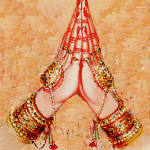 |
|
This post is part of the Tamil Heritage Month Initiative. Tamil Heritage Month seeks to celebrate Tamil heritage, culture, and history. Throughout this month and January, we will be providing you with educational material and poetry that seeks to help us celebrate and understand our culture, roots and heritage. January 29, 2014 Updated every other Wednesday, “Thangachi’s Corner” is a bi-monthly feature that discusses relatable topics and issues relevant to the Canadian Tamil youth of today. For more information about this feature or to suggest a topic, feel free to e-mail us at blogs@ctya.org! Written By: Keerthana Raveendran My Appappa doesn’t like the word, “Hi”. It sounds a bit odd, to have a vendetta against a two-letter greeting word used commonly in the English language. But Appappa doesn’t believe in “Hi” because he subscribes to the use of a slightly longer, five-letter word deeply rooted into our Tamil culture. And I don’t mean “Hello”. Ever since I was young, my brothers and I were taught to greet fellow Tamil folk not with a hello and a handshake, but rather with Vanakkam and a very famous hand gesture in which palms meet in a salute. Vanakkam (five letters in its Tamil spelling) symbolically signifies a greeting from the soul. While there are many different interpretations of the word and symbol, the most common one, and the one I grew up hearing, is that Vanakkam is a greeting between two souls, regardless of their status in life. The soul is viewed in a sacred manner, akin to God despite the age or character of its owner. While etymologically, the word Vanakkam stems from the root, “to bow”, referring to a respectful, reverent and worshipping gist, the greeting almost translates into a single phrase: “My soul bows to your soul”. It’s actually rather lovely when you stop and think about it. Vanakkam is a symbol of mutual respect between an adult and a child, between a rich person and a poor one, between a teacher and a student—it transcends man-made boundaries of classification to demand regard for every individual. Living in an almost exclusively Anglophone society Canada, it is difficult for us to maintain our Tamil language in casual conversation. But being a single word, Vanakkam is a very manageable step in the right direction. It not only immediately identifies us as Tamil, but also serves as a link to our Tamil heritage. So try not to hesitate in Tamil company—set aside your hello’s, bonjour’s and hola’s, put your palms together at your chest, and utter, as you greet one another, a warm and heartfelt: Vanakkam. |
Thangachi’s Corner: Celebrating Our HolidaysBy Admin - January 15th, 2014 |
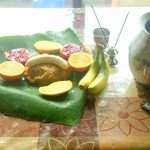 |
|
This post is part of the Tamil Heritage Month Initiative. Tamil Heritage Month seeks to celebrate Tamil heritage, culture, and history. Throughout this month and January, we will be providing you with educational material and poetry that seeks to help us celebrate and understand our culture, roots and heritage. January 15, 2014 Updated every other Wednesday, “Thangachi’s Corner” is a bi-monthly feature that discusses relatable topics and issues relevant to the Canadian Tamil youth of today. For more information about this feature or to suggest a topic, feel free to e-mail us at blogs@ctya.org! Written By: Keerthana Raveendran For some of us, yesterday was a regular day. We got up in the morning, went to either school or work, had a mediocre meal to go with our mediocre routine and managed to make it home in one piece. But for a lot of us Tamil folk, yesterday was special. We celebrated Thai Pongal, the harvest festival that takes place in early January to honour the sun, land and livestock for providing nourishment and sustaining our livelihood. Now, isn’t that something? Of course, when I say that we “celebrated” this joyous occasion, I really mean, “we cleaned our houses to Amma’s nagging and called it a day”. We probably even went to school like chumps. Maybe we took a short trip to the temple, or perhaps we ate some pongal, if we were lucky, but chances are, celebrations took place largely on the screen and less in life. We Canadian Tamils have a terrible habit of spending our holidays in lacklustre fashion. The work part? We’re great at that. We (or at least, some of us) will do the necessary cleaning, but when we get to the actual celebration, we are at a complete loss. If we had been raised back home, this holiday would have been a terrific festivity. We would have dressed up in new clothing, decorated our houses with kolam, and visited the temple. We might have made special dishes at home, would have also exchanged gifts with family and friends. Perhaps we may have even lit fireworks or attended special programs. Back home, Thai Pongal is legit. But here in Canada, we are exposed to a whole new set of challenges that makes slim our ability to celebrate the way our ancestors had. Restricted by Canadian law, we can hardly light fireworks wherever we want. Now, we are required to drive to temples rather than walk, and our kolam designs appear indoors rather than out, if at all. Living in a very mixed society, we do not necessarily cherish the same ûr of our parents—rather, the close sense of family and friends all celebrating the same traditions is transformed into one of Tamil folks desperately attempting to cling onto a solitary strain of culture amongst a colourful myriad of various other ethnicities. So how exactly do we celebrate, then? We are in a very different position from our ancestors. As one of the earlier generations of Tamil youth in Canada, we are presented with a marvellous opportunity—to craft our own traditions. We have both the occasion and the responsibility to raise awareness about our culture and to demand recognition for the holidays we celebrate. As youth, we can begin by exempting ourselves from school or asking for leave from work on major cultural landmarks such as Thai Pongal, in favour of cultural observance. After all, if festivities such as Christmas and Easter are nationally recognized, why not our holidays as well? Because we make up the early generation of Tamils in Canada, only we can create the new traditions that will make up our cultural holidays—consider it a social obligation, if you will. Who knows—maybe fifty years down the line, we’ll be the ancestors they talk about. About the Author: Keerthana Raveendran, known by her flock as Thangachi, is an aspiring author whose motivation to write usually kicks in when she’s supposed to be occupied elsewhere. She is an avid procrastinator who sees potential novel ideas as movies in her head. Maybe one of these days they’ll make it onto the page. Thangachi is currently a Masters student studying English at York University. |
Grand Finale of Tamil Heritage Month 2014: Thamil VizhaBy Admin - January 14th, 2014 |
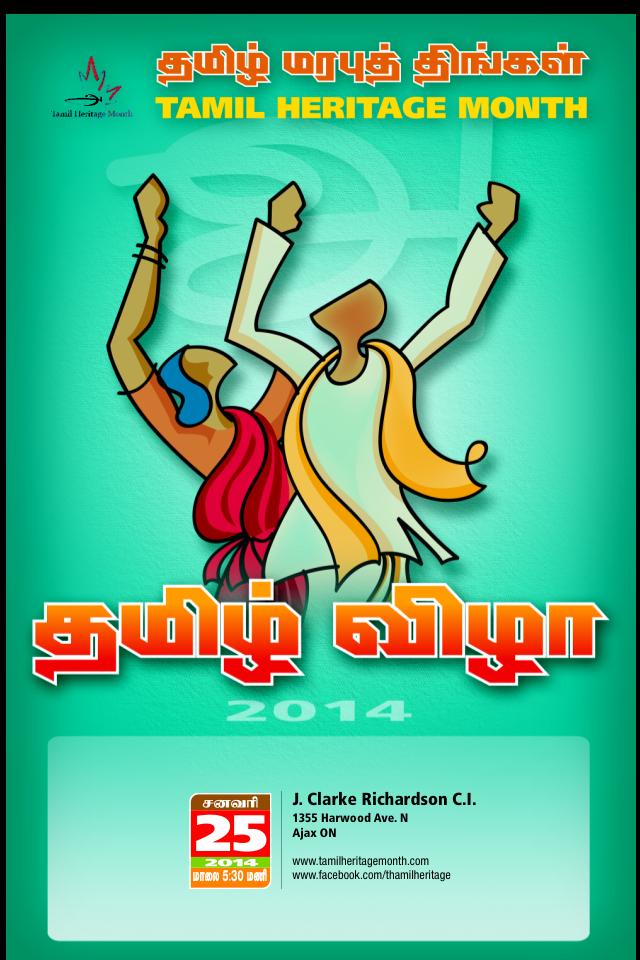 |
|
Tamil Heritage Month committee invites you to the Grand Finale of Tamil Heritage Month 2014: Thamil Vizha at J Clarke Richardson Collegiate 1355 Harwood Ave. N., Ajax, Ontario L1T 4G8 at 5:30 pm. The program will be a stage show of various Tamil cultural performing arts! The performances are provided by the organizations that are part of the committee. Please email info@tamilheritagemonth.com if you need more information. |
Thai Pongal and Tamil New Year Wishes!By Admin - January 13th, 2014 |
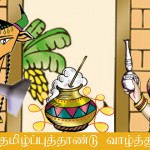 |
|
On behalf of CTYA’s Blog Team, we would like to extend our warmest Tamil New Year and Thai Pongal wishes! அனைத்து தமிழ் உறவுகளுக்கும் கனேடிய தமிழ் இளையோர் ஒன்றியத்தின் உறுப்பினர்கள் மற்றும் இயக்குனர்களின் சார்பில் எமது இதயம் கனிந்த தைப்பொங்கல் மற்றும் தமிழ் புதுவருட நல்வாழ்த்துகள்! The Tamil month of Thai is a month of celebration, joy, and thanksgiving. Thai Pongal marks the beginning of a New Year for the Tamils. During Thai Pongal, Tamils celebrate by offering gifts to family, dressing in new clothing, and giving thanks to the natural elements. From pagan festivals to modern-day festivals, ceremonies of thanksgiving remain an integral part of culture and tradition. Likewise, Tamils all around the world celebrate thanksgiving during the festival of Thai Pongal. Thai Pongal is a four-day long harvest festival where individuals offer thanks to nature for providing grain, the basic staple of the food chain. The etymology of Thai Pongal can be traced to the meaning of its root words “pong” and “thai,” which mean “to boil” and “January” in Tamil. Thai Pongal marks the first day of a new year, and a new month of the Tamil calendar. On this day, farmers will thank nature, especially the Sun and the farm cattle for their allowing them to reap a bountiful harvest, and will harvest new crops including rice, cereals, sugar cane, and turmeric for the next season. “Thai” holds much cultural and social significance; it has not only marks the beginning of a new year, but has traditionally been the month in where most weddings are held. The Tamils have traditionally been an agrarian society, as a result, the months of plentiful harvest was the months in which resulted in economic output. Thai being such a month meant that more families were able to bear the expenses of holding a wedding. Maatu Pongal is a celebration that follows Thai Pongal in which farmers honour their cattle for its hardwork by giving it a bath and adorning it. Thamils all over the world celebrate Thai Pongal by giving thanks to nature, making special dishes, giving gifts to family, and dressing up in new clothing. It is a cultural holiday and festival, thus it is celebrated by all Thamils. Many believe that with the onset of a New Year, better pathways and beginnings will follow, thus the common phrase, “Thai piranthaal, vali pirakum.” On behalf of CTYA’s Blog Team, we wish you and your families a prosperous and joyous Thai Pongal, and hope this year brings with it new opportunities, new beginnings and happiness. |
The Struggle for IndependenceBy Admin - January 11th, 2014 |
 |
|
This post is part of the Tamil Heritage Month Initiative. Tamil Heritage Month began to celebrate Tamil heritage, culture, and history. Throughout this month and January, we will be providing you with reflective pieces, educational material and poetry such that seeks to help us celebrate and understand our culture, roots and heritage. Written By: Athithan Kurukulasingam Growing up, I was brought up in a very nurtured environment. Structure and balance was a key component of my childhood. My dad instilled upon me his views and beliefs which predominately were very hard-line. He would let me know quite clearly what his views were and he expected me to comply to his wishes or face the consequences. My mother on the other hand, was the soft maternal figure who preached to me her ways in a more subtle manner. For her, it was more effective to catch me at an emotionally low point and comfort me with reassuring thoughts. She would enlighten me with the ins and outs of life and how one should strive to live as virtuous a life as possible. It is still a struggle for me today to distinguish who was more effective in their methods. I’d like to think that my mom, was but oh boy, did Dads beatings hurt. Comedic relief aside, I knew one thing from my childhood. I was raised thinking that family was the end all be all. You live for your family and you die for your family. I’m sure many of us still feel the same way; however, an interesting thing happens as you get older. The struggle for some sense of independence takes over. It isn’t farfetched to say that the Tamil culture is a predominantly family oriented one. As I get older I still strive to live my life in a way where I can satisfy my parents wishes; however, the waters become more and more muddy each day. As a young man, I seek some form of independence that separates myself from my family for even a little while. The smallest of things can have a significant impact on a family’s relationship. To highlight this issue, I have a small story which can shine light onto this matter. As a kid, you’re dragged everywhere with your parents. Every birthday, wedding, family get together and so on and so forth. As you get older, you may need to miss some of those events that you previously went to as a family. It may be because you had something else to do or quite frankly you just don’t want to go to those events because you aren’t five anymore. This becomes a source of tension within your household because our parents want to still be that family that goes everywhere together and does everything together. They sometimes find it hard to believe that we actually have grown up. It isn’t even about growing up becoming independent and moving out. The Tamil culture is soft. I don’t mean soft in a negative manner. Small incidents have more emotional impact in our culture in my opinion. Another example of this took place in my household. When my siblings and I were younger, we would all have lunch and dinner as a family at the family table; however, as we got older we all started having these meals at different times and in different places. This was quite a distressing trend for my parents, as we got more and more independent, the more hurt they seemed to get. So now the dilemma, how to satisfy the wishes of your parents while maintaining the independence you seek. It should be noted that every family is different and some deal with change better than others. What I found to be quite helpful is to find a balance. No matter how busy you get or how old you are, deep down you are still kids in the eyes and hearts of your parents. They will always love you and nurture you in an unconditional manner. Most of us will do anything to please our loved ones and I am no exception. As much as our parents should be understanding of our desires to grow up and act independently, we the kids, should at the same time, take a step back and be the kids we once were. Life is a vortex of time and space, it is forever spinning and you can never go back. When you were younger you started near the top and each round around the circle was quite large; however, as you get older and inevitably as does your loved ones, those rounding trips get smaller and smaller and eventually you’re sucked in. Issues we find to be a hassle in the present may no longer be so big later on in life when we too have our own kids and go through this repeated process. I’ve mentioned time and time again that every family is different and so each one of us have our own way of pleasing our parents. For myself, simple things such as eating dinner as a family, staying home and chatting with my parents instead of going out, going to outings as a family can all make a difference. Our parents always have a reason for their methods. To us eating dinner as a family might not seem like a big deal but in reality it teaches us the importance of togetherness and family bonding. Going to all these family events is not just to annoy us, it teaches us about our family and our roots. We owe a great deal to our parents, they’ve sacrificed a lot for us and we should sometimes put our independence on the backburner and live for them. We have a whole lifetime to be independent but a significantly smaller portion to be a child to a parent. |
Beyond a Beautiful Design: Kolam SignificanceBy Editor - January 10th, 2014 |
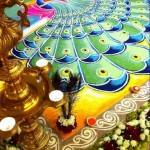 |
|
This post is part of the Tamil Heritage Month Initiative. Tamil Heritage Month began to celebrate Tamil heritage, culture, and history. Throughout this month and January, we will be providing you with reflective pieces, educational material and poetry such that seeks to help us celebrate and understand our culture, roots and heritage. Written by: Gayathiri Sivakumar Kolams, decorative designs drawn with rice flour traditionally by women in front of their homes serve to be more than being aesthetically pleasing. Kolams have great cultural and medical significance. Air Circulation and Cleansing – In some Tamil regions, prior to designing a Kolam, the area in front of the house is washed with water mixed with cow dung. Cow dung helps in killing insects and helps in air circulation. Exercise – Women are typically the ones who have traditionally been the designers of Kolams. Women were also more likely than men to suffer back-pain due to household chores. Therefore, Kolam design forces a women to bend and balance, and served as a form of exercise to strengthen her backbone for the day’s work. This form is called the ‘Yogasana’, and is thought to be very strengthening to women. Inviting the Gods – Kolams are thought to be inviting to the Gods, and drawing a particular Kolam is thought of as a welcoming to a particular God. Also, the intention and mood of the designer is important in welcoming the Gods, so it calls for a pure heart and happiness early in the morning. Living Creature – The rice flour used in Kolam design serves as food for insects and birds. Drawing the Kolam at one’s house entrance is thought to be a symbol and action of a human’s concern for all living organisms. It was a representation of harmonious co-existence. Meditation – Kolam was also thought of as a form of meditation and comfort for women. The “Sikkal Kolam”, a specialized Kolam was practiced as a way of providing women with assurance that they would be able to solve any problem that came in their lives. It was believed that the practicing of drawing the “Sikkal Kolam” provided women with the capability of better problem solving and clarity early in the morning by forcing them with creativity and outward thinking. Teamwork – Kolam is an activity that was practiced by entire communities, and thus designs were shared among the women. This was thought to help provide unity, comfort and friendship for women. Warding Away Evil – Our ancestors have thought of many ways to ward off veil, and it is believed that enclosing a Kolam is red helps ward off evil from entering the house. Some of the geometric connections in the Kolam itself are thought to ward off evil. Kolams have now also been analyzed as a form of expressing pictures and math, to check out more, check out this recommended read! |
Thai Pongal Wishes from The Honourable Tim Uppal, P.C., M.P. Minister of State for MulticulturalismBy Admin - January 9th, 2014 |
 |
|
Minister of State (Multiculturalism) Ministre d’État (Multiculturalisme) Greetings from the Honourable Tim Uppal, P.C., M.P. I would like to extend my warmest greetings to those attending the celebrations at the Markham Civic Centre. On behalf of Prime Minister Stephen Harper, I would also like to wish all Canadian Tamils a Happy Thai Pongal. Canada’s Tamil community members have served in all fields and have also greatly enhanced our pluralism with a vibrant and growing cultural presence. The Tamil Canadian community has been one of the fastest growing visible minority groups in Canada over the past thirty years. For the Tamil community in Canada, Thai Pongal is a time of joy and celebration. Thai Pongal provides an opportunity for all Canadians to reflect on all the contributions that Canada’s Tamil community has made to our country. Thank you to all the volunteers and to the organizers of this celebration for putting their time and effort into making this event a success. Congratulations and please accept my best wishes for the future. Sincerely, The Honourable Tim Uppal, P.C., M.P. Minister of State for Multiculturalism |

